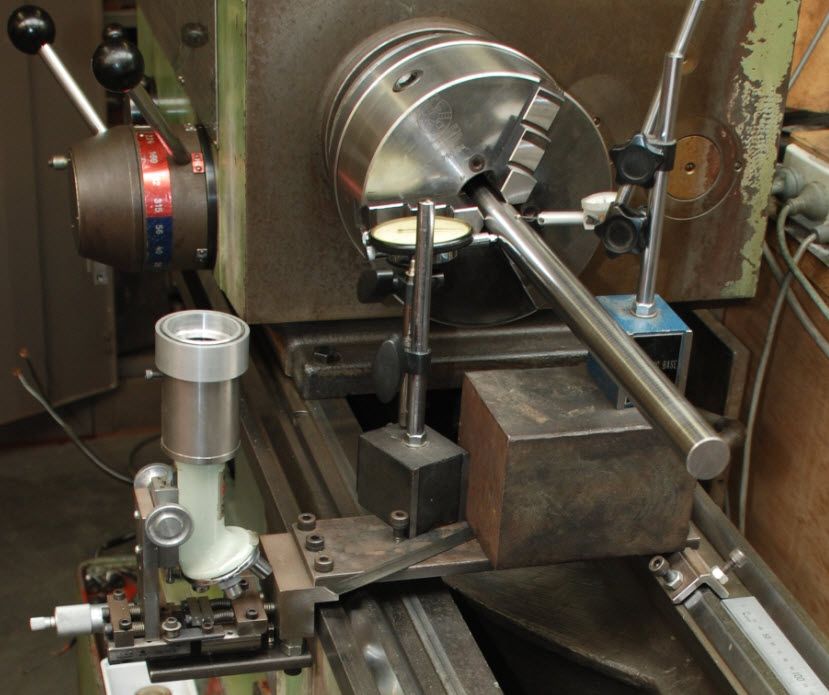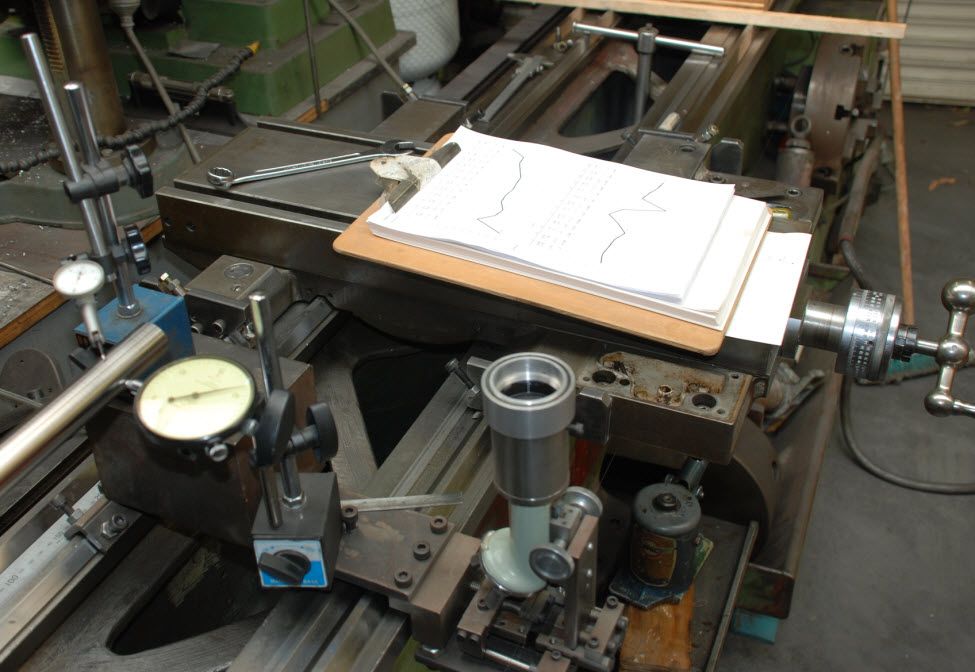Hi Michael and Phil ,
Just a few thoughts :
(1) The target in facing off work in a lathe is simply to obtain a true flat surface as near as possible when specified for the workpiece – don’t see how there can be any argument . Same as target to obtain truly round and truly parallel cylindrical turning as near as possible and truly flat milled and ground surfaces as near as possible .
(2) The oft stated ‘fact’ that two surfaces have to be specifically concave to bed properly is wrong . Flat on flat as near as practically possible is what is required .
(3) At extreme levels of flatness the concepts of concave and convex have little meaning . When down to a level of flatness of the same order of magnitude as surface roughness and of the linearity errors in slides the definition of flatness becomes hard to define and statistical .
(4) At extreme levels of flatness also the workpiece and any mating workpiece are both very flexible . Either or both being microscopically concave or convex really doesn’t matter in most cases of practical assemblies .
(5) Even a nominally very flat surface actually looks like a variable height range of peaks and troughs at microscopic level . Geometry of peaks and troughs can be systematic or random . Bedding of one surface against another depends in part on how one surfaces set of peaks and troughs relates to the other surfaces set of peaks and troughs .
In practical engineering geometry of peaks and troughs can be controlled to a large extent by the machining process so as to give advantages for different purposes .
(6) So larger scale geometric accuracy , small scale geometric accuracy , roughness , lay and component flexibility all have effecst on how surfaces bed together .
(7) This is philosophical perhaps but it’s a question of who’s in charge of a particular design .
In quality engineering if flatness or some other surface geometry matters on a particular workpiece it is DEFINED in the design and on the manufacturing drawing .
To allow an important design features to be randomly modified on the shop floor by someones idea of needing ‘concavity’ et al in the machining process is just nonsensical .
Regards ,
Michael Williams .
Phil Whitley.








